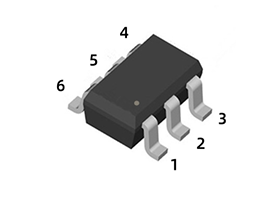Pulse and Timing Circuits
Date:2025-05-22 Categories:Product knowledge Hits:379 From:Guangdong Youfeng Microelectronics Co., Ltd
4. Pulse and Timing Circuits
Switching diodes are widely used in pulse and timing circuits to generate, shape, and control electrical pulses. In monostable and astable multivibrators, the diodes help determine the charging and discharging times of capacitors, which in turn controls the duration and frequency of the generated pulses. They are also used in delay circuits to introduce precise time delays in signal propagation. By carefully selecting the diode's characteristics and circuit parameters, engineers can create highly accurate pulse - generation and timing circuits, which are essential in applications such as digital clocks, timers, and pulse - width modulation (PWM) circuits.
5. Automotive Electronics
In the automotive industry,
Switching diodes find extensive use in various electronic systems. They are used in automotive alternators for rectification, converting the AC output of the alternator to DC power for charging the battery and powering the vehicle's electrical system.
Switching diodes also play a vital role in automotive lighting systems, such as in LED headlights and taillights, where they are used for current regulation and protection against voltage surges. Additionally, they are used in engine control units (ECUs) and other automotive control systems for signal processing, circuit protection, and power management, ensuring the reliable operation of these critical components in the harsh automotive environment.
In summary, the wide - ranging applications of
Switching diodes highlight their importance in modern electronics. Their ability to switch rapidly and efficiently makes them essential components in digital, power, high - frequency, pulse, and automotive circuits, driving the development and performance of countless electronic devices and systems. As technology continues to evolve, the demand for switching diodes with even better performance and functionality is expected to grow, further expanding their usage in emerging applications.

Previous:
Classification, Structure, and Principle of MOSFET
Next:
Usage of High-Voltage Diodes1
